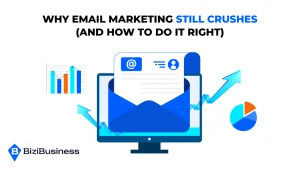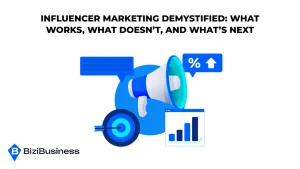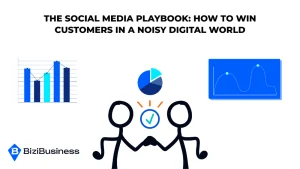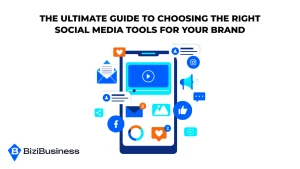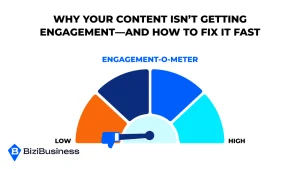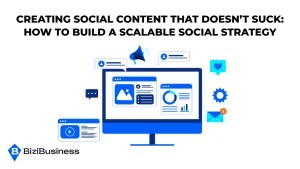BiziTopics
Don’t Just Run Mobile Ads — Master Them (And Outperform Everyone)
BiziBusiness
Jul 8, 2025
18 min read
If you’re running mobile ads the same way you run desktop campaigns, stop. You’re burning your budget.
Mobile advertising is massive — billions of users, endless screens, huge potential. But most brands miss the mark. They just resize desktop ads and hope they’ll work on a tiny screen.
Spoiler alert: They don’t.
It’s not enough to just run mobile ads — you have to master them.
Mobile users are ruthless. One bad ad, and they’re gone. No clicks, no sales, just wasted spend.
You need ads that grab attention fast, feel natural, and speak to that mobile mindset — quick, clear, and compelling.
Mobile ads aren’t just mini desktop campaigns. They’re a whole different beast. Master them, and you’ll crush your competition.
Ready to stop wasting budget and start seeing results?
What Mastery Actually Looks Like in Mobile Paid Ads
Mastering mobile paid ads isn’t just about impressions or click-through rates (CTR). A truly mastered campaign delivers measurable outcomes like a positive return on ad spend (ROAS), customer retention, and a reduced cost per sale.
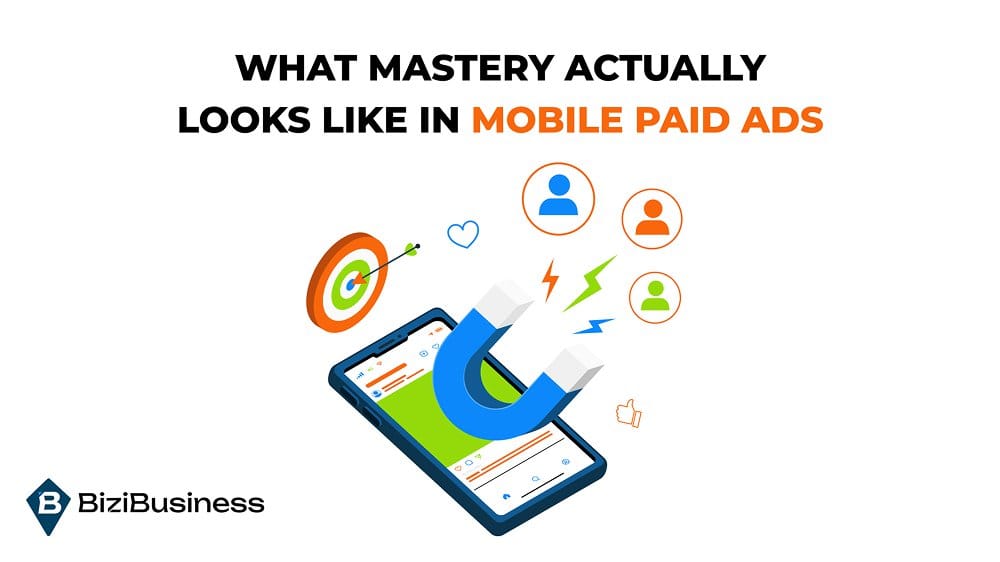
Going Beyond Impressions and CTR
Focusing solely on impressions is misleading. What truly matters are actionable insights that translate into revenue. This means looking at user engagement, post-click behavior, and the quality of traffic.
Key Indicators of a Mastered Campaign
- ROAS (Return on Ad Spend): Measure how much revenue your ads generate relative to costs.
- Customer Retention Rates: A sign that your ads are not only acquiring customers but keeping them engaged.
- Cost Per Sale (CPS): The actual cost to convert a mobile user into a paying customer.
Mobile-Specific Metrics to Track
- Install-to-Purchase Ratio: Especially relevant for app-based campaigns.
- Session Duration and Depth: Indicators of user engagement and satisfaction.
- Click-to-Call Conversions: Highly valuable for local businesses.
Mobile ad mastery requires shifting focus from vanity metrics to performance indicators that directly impact the bottom line.
Audience Targeting: Nail It or Fail It
If your mobile ad campaigns aren’t delivering results, poor audience targeting might be the culprit. The way users interact with mobile ads differs significantly from desktop, and failing to acknowledge this can quickly drain your ad budget.
How Mobile Behavior Differs from Desktop
Mobile users are on the move, constantly switching between apps and juggling notifications. They often consume content in shorter bursts compared to desktop users. This means they’re quick to dismiss irrelevant or poorly targeted ads. Additionally, they’re more likely to respond to personalized, contextual, and location-based messages.
Key Differences:
- Shorter Attention Spans: Mobile users scroll faster and make decisions quicker.
- Context Matters: Mobile interactions are often situational—waiting in line, commuting, or multitasking.
- Multi-App Switching: Users frequently bounce between social media, messaging, and content apps.
Segmentation Tactics for Mobile-First Audiences
To nail mobile targeting, you need to break free from desktop-centric segmentation methods. Instead, focus on mobile-first strategies that align with user habits and contexts.
1. Behavioral Targeting:
Analyze how users interact with your content across mobile apps and sites. Understand their swipe patterns, time spent on pages, and which types of content make them stop and engage.
2. Device and OS Targeting:
Adapting your campaign for Android vs. iOS can make a big difference. Apple users might engage differently compared to Android users, especially when it comes to privacy settings and app interactions.
3. Interest and Activity-Based Segmentation:
Tap into the power of social media data. Platforms like Facebook, Instagram, and TikTok offer granular insights into user interests and behaviors, helping you serve relevant ads at the right moment.
4. Timing Matters:
Mobile usage spikes during commute hours, lunch breaks, and evenings. Scheduling ads during these peak times can boost engagement.
Real-Time and Geo-Based Targeting Wins
One of the greatest advantages of mobile advertising is the ability to leverage real-time data and geolocation.
Geo-Fencing:
Set a virtual boundary around a specific location (like a store) and push ads to users who enter that area. This is highly effective for brick-and-mortar businesses looking to boost foot traffic.
Event-Based Targeting:
Leverage local events or community gatherings to target attendees with relevant offers or content. Real-time targeting during events can dramatically increase brand recall and interaction.
Push Notifications and In-App Messages:
When users are actively using your app, push notifications or in-app messages can drive immediate engagement. Use these sparingly to avoid annoyance, but make them contextually relevant.
Why You Can’t Afford to Miss the Mark
Failing to target accurately on mobile means wasting ad spend and frustrating users. To succeed, you must embrace mobile-specific strategies that cater to on-the-go behaviors and real-time interactions.
Master your mobile audience targeting, and your ad dollars will start working harder—reaching the right people at the right time with the right message.
Creative That Converts on a 6-Inch Screen
Creating ads that stop mobile users in their tracks requires a different approach than desktop. You’re dealing with limited space, faster scroll speeds, and users with shorter attention spans. To make an impact, your creative needs to be visually compelling, concise, and purpose-driven.

The Psychology of Thumb-Stopping Visuals
Mobile users are notorious for their rapid scrolling. Your ad has mere seconds to capture attention, so the visual element is crucial. Think bold colors, dynamic motion, and simplicity.
Why It Works:
- Bold and Bright Colors: Catch the eye as users swipe.
- Faces and Emotions: Human expressions evoke an instant response.
- Dynamic Elements: Movement draws attention—whether it’s an animation or a quick-cut video.
- Minimal Text: Let visuals do the heavy lifting. Users won’t squint to read dense text.
Copywriting Tips for Small Screens (Clarity > Cleverness)
On mobile, clarity beats cleverness every time. Users won’t spend time decoding witty wordplay when they’re multitasking or on the move.
Rules for Mobile Copy:
- Be Direct: Make your message clear from the start.
- Keep It Short: Aim for 5-7 words per line.
- Front-Load Value: Start with the benefit or key point.
- Add Urgency: Phrases like “Limited Time” or “Today Only” spark action.
- Call to Action (CTA) First: Lead with “Shop Now” or “Learn More” so users know exactly what to do.
The Power of Video and Animation in Mobile Formats
Videos and animated content consistently outperform static images on mobile. They’re more engaging, and platforms like Instagram, TikTok, and YouTube favor video content.
Winning Video Strategies:
- Start Fast: Capture attention in the first 3 seconds.
- Vertical Format: Optimize for how users naturally hold their phones.
- Subtitles Matter: Most users watch without sound—text overlays are a must.
- Keep It Real: Raw, authentic footage feels more relatable than overproduced content.
- Short and Snappy: Stick to 10-15 seconds for ads.
Examples of Mobile-Optimized Ad Creative:
- Interactive Polls: Engage users by letting them vote or make a choice.

- Carousel Ads: Showcase multiple products without overwhelming the screen.
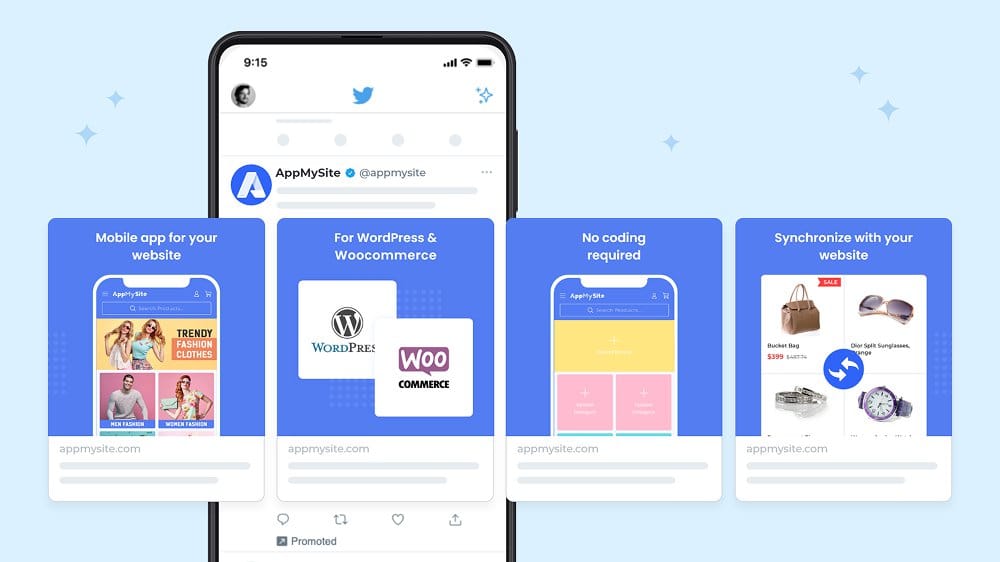
- GIFs and Cinemagraphs: Eye-catching yet lightweight for faster loading.

- Story Ads: Seamlessly integrate into Instagram or Facebook stories for a more native feel.
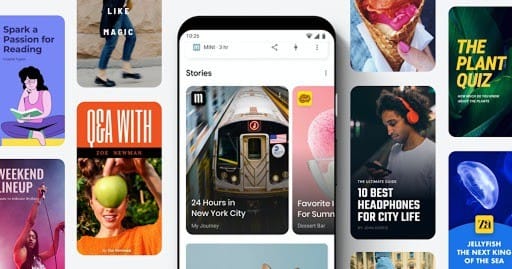
Platform-Specific Strategies

Not all mobile ad platforms are created equal. Each platform has unique user behaviors, ad formats, and engagement tactics. Mastering platform-specific strategies means tailoring your approach to leverage each one’s strengths.
Meta Ads (Instagram + Facebook Mobile Behavior)
Meta’s platforms are mobile-first by nature, with billions of active users who predominantly access the apps via mobile. However, Facebook and Instagram users engage differently, so your ads should too.
Facebook Mobile Ads:
- Video Rules: Short, captivating videos outperform static images.
- Native Feel: Ads that look like organic posts blend in and feel less intrusive.
- Social Proof: User comments and shares increase credibility.
- Messenger Integration: Offer a direct response option to spark conversations.
Instagram Mobile Ads:
- Stories and Reels: Short, vertical videos dominate engagement.
- Aesthetic Matters: High-quality visuals and stylish design are essential.
- Interactive Elements: Use polls, questions, and swipe-ups to boost interaction.
- Hashtag Targeting: Reach niche communities by incorporating relevant tags.
Pro Tip: Use Facebook’s Audience Network to expand your mobile reach beyond the platform itself.
TikTok Ads (Why Raw > Polished)
TikTok’s fast-paced, trend-driven environment rewards authenticity. Unlike polished content, raw and relatable videos get more engagement.
Best Practices:
- Keep It Real: Filming with a smartphone rather than professional equipment makes ads feel more organic.
- Follow Trends: Incorporate trending sounds and challenges to boost relevance.
- Direct Messaging: Address viewers directly to create a personal connection.
- CTA Placement: Make it natural—like encouraging a duet or comment.
Ad Formats That Work:
- In-Feed Ads: Blend seamlessly with user-generated content.
- Branded Hashtag Challenges: Encourage user participation and viral potential.
- Spark Ads: Amplify organic content directly from creators for more authenticity.
Google App Campaigns
Google App Campaigns are designed to promote your app across Search, YouTube, Google Play, and more. Optimizing your creative for each of these channels can significantly improve your download rates.
Strategies for Success:
- Automated Ad Variations: Let Google test different combinations to find the best performing ones.
- Focus on App Installs and In-App Actions: Set specific goals to optimize for valuable users.
- Localize Your Ads: Adapt your content for different regions or languages.
- Rich Media Formats: Use images, videos, and text to maximize reach.
In-App Display vs. Web-Based Ad Delivery
Understanding the difference between in-app ads and web-based ads on mobile is crucial for effective targeting.
In-App Display Ads:
- Native Integration: Ads that blend into the app’s UI are less disruptive.
- Gaming Apps: Rewarded video ads perform exceptionally well.
- Personalized Messaging: Use user data from the app to make ads feel more relevant.
Web-Based Mobile Ads:
- Responsive Design: Ensure ads scale well on different screen sizes.
- Load Speed: Prioritize lightweight ad formats to avoid lag.
- Banner Fatigue: Rotate creative frequently to avoid ad blindness.
The Technical Side: Speed, UX & Conversion Flow
Even the most well-crafted ad can fail if your mobile landing page doesn’t perform. Mobile users are notoriously impatient—if your page takes too long to load or the layout is clunky, they’ll bounce. Mastering the technical side ensures your ads don’t just attract clicks but also convert them.
Mobile Landing Page Optimization Best Practices
Your landing page must be optimized specifically for mobile. That means fast load times, intuitive navigation, and a clear path to conversion.
1. Speed Matters:
- Load in Under 3 Seconds: Pages that take longer can lose up to 53% of visitors.
- Compress Images: Reduce file sizes without losing quality.
- Leverage Browser Caching: Store site resources on users’ devices for faster reloads.
- AMP (Accelerated Mobile Pages): Use AMP versions to streamline content loading.
2. Mobile-Friendly Design:
- Responsive Layouts: Adapt to any screen size without sacrificing usability.
- Thumb-Zone Design: Prioritize buttons and links in areas reachable by a thumb—usually the lower half of the screen.
- Clickable Elements: Make CTAs and links large enough to be tapped without error.
3. Content Simplification:
- Minimal Text: Keep copy concise and clear.
- Visual Hierarchy: Use bold headings, bullet points, and imagery to break up text.
- Single-Focus Pages: Avoid clutter—focus on one primary CTA to minimize distractions.
Why “Friction Kills” in Mobile Ad Funnels
Friction is any obstacle that prevents users from completing an action. On mobile, even a slight delay or confusing step can significantly drop your conversion rate.
Common Friction Points:
- Complicated Forms: Use autofill options and limit required fields.
- Multiple Steps: Reduce the number of actions needed to complete a conversion.
- Poor Navigation: Keep the user journey straightforward and intuitive.
- Unexpected Pop-Ups: Avoid blocking content with intrusive pop-ups or ads.
Streamlining the Conversion Flow
Your ad journey shouldn’t feel like a maze. Once users click, they should immediately understand what to do next.
Key Tips:
- Consistency from Ad to Landing Page: The message and design should feel cohesive.
- Sticky CTAs: Keep action buttons visible as users scroll.
- One-Click Actions: Enable social login or autofill to reduce friction.
- Test and Iterate: Continuously A/B test elements to identify what reduces bounce rates.
Data, Testing & Scaling What Works
Successful mobile ad campaigns don’t happen by chance—they’re the result of data-driven decisions and continuous optimization. To scale what works, you first need to understand what’s working and why.
How to Structure A/B Tests for Mobile Audiences
Testing on mobile requires a unique approach since user behavior varies based on device type, operating system, and usage context. A/B testing helps you fine-tune your campaigns by comparing different versions of your ads, creatives, or landing pages.
Key A/B Testing Strategies:
- Single Variable Focus: Test one element at a time—like CTA wording, image choice, or video length.
- Mobile-Specific Metrics: Track mobile-specific engagement metrics such as swipe rates, video completion rates, and click-to-call conversions.
- Real-Time Feedback: Leverage instant insights from push notifications or in-app messages to gauge user reactions.
- Short Testing Cycles: Mobile user behavior shifts rapidly, so run tests for shorter periods compared to desktop campaigns.
What to Test:
- Ad formats (carousel vs. single image)
- CTA placement (top, middle, or bottom of the screen)
- Color schemes and visual styles
- Personalization elements (like location-based messaging)
Reading Data the Right Way (Beyond Vanity Metrics)
Mobile campaigns can be misleading if you’re only tracking vanity metrics like impressions or click-through rates.
Instead, focus on metrics that directly impact your bottom line.
Key Performance Metrics:
- ROAS (Return on Ad Spend): Determines if your investment is profitable.
- Click-to-Conversion Rate: Measures the percentage of users who take the desired action after clicking.
- Retention Metrics: Track how many users stay engaged after their initial interaction.
- Customer Lifetime Value (CLV): Identifies how much revenue a customer will generate over time.
Avoid These Traps:
- High CTR, Low Conversions: Clicking doesn’t equal buying. Look deeper into the post-click behavior.
- Ad Fatigue: Monitor performance dips indicating that users are tuning out repetitive ads.
- Misinterpreting Bounce Rates: Sometimes, high bounce rates indicate that your landing page isn’t mobile-optimized.
When and How to Scale a Winning Mobile Ad Campaign
Once you’ve identified a winning combination, scaling should be systematic rather than impulsive. Gradual scaling helps maintain performance without overwhelming your budget.
Scaling Tactics:
- Budget Increment: Increase your budget by 20-30% at a time to maintain algorithmic stability.
- Audience Expansion: Broaden targeting by including lookalike audiences or similar interests.
- Cross-Platform Scaling: Repurpose high-performing creatives across multiple mobile ad networks.
- Geographical Scaling: Start with one location, then gradually expand to others based on performance.
Maintaining Performance During Scaling
As you scale, monitor key metrics closely to ensure that performance doesn’t drop. Adjust bids and targeting as needed and be prepared to pause any ads that start underperforming.
Common Pitfalls That Drain Your Ad Budget
Mobile advertising has incredible potential, but it’s also riddled with traps that can quickly eat up your budget without delivering results. To maximize ROI, you must be aware of the most common pitfalls and how to avoid them.

Ignoring Creative Fatigue
Repetition might work for brand recall, but in mobile ads, running the same creative for too long leads to ad fatigue. Users start tuning out your message, and engagement drops significantly.
Signs of Creative Fatigue:
- Declining CTR despite stable impressions
- Increased CPM (Cost Per Thousand Impressions)
- Negative feedback or hidden ads
- Lower post-click engagement
How to Fix It:
- Rotate Creatives: Change visuals, copy, or CTA regularly.
- A/B Test Variations: Keep testing different versions to identify fresh angles.
- Use Dynamic Ads: Automatically swap out elements to maintain novelty.
Using Desktop-First Strategies on Mobile
Mobile users interact differently compared to desktop users, yet many marketers still make the mistake of downsizing desktop ads for mobile.
This doesn’t just lead to poor engagement—it actively alienates users.
Why It Fails:
- Small Text and Cluttered Layouts: Desktop ads shrunk to mobile become unreadable.
- Inadequate CTA Placement: Desktop CTAs often fall outside the mobile-friendly thumb zone.
- Lack of Mobile-Specific Interactions: Desktop ads don’t leverage swipe, tap, or click-to-call actions.
How to Fix It:
- Mobile-First Design: Start by designing for mobile and adapt to desktop second.
- Prioritize Touch Interactions: Ensure CTAs are thumb-friendly and easily accessible.
- Adapt Visuals: Use bold, simple imagery that works well on small screens.
Not Adapting to iOS Privacy Changes & Tracking Limitations
Since Apple’s iOS 14.5 update, user consent is required for ad tracking, leading to reduced data accuracy and targeting capabilities.
Ignoring this shift can severely undermine your campaign performance.
Impact on Mobile Ads:
- Lower Retargeting Accuracy: Users opting out of tracking makes audience segmentation more challenging.
- ROAS Calculation Issues: Data gaps distort performance metrics.
- Higher CPAs (Cost Per Acquisition): Reaching the right users becomes costlier.
How to Fix It:
- Leverage First-Party Data: Use your own customer insights to build more accurate segments.
- Focus on Android Audiences: Since tracking restrictions are less severe on Android, balance your ad spend between platforms.
- Implement SKAdNetwork: Apple’s framework helps measure ad performance while respecting user privacy.
- Contextual Targeting: Instead of personal data, target based on content and context.
Over-Targeting Your Audience
While precision targeting is crucial, being too narrow can significantly limit your ad’s reach and impact. By obsessively refining your audience, you risk missing out on potential customers.
How to Fix It:
- Broaden Your Audience: Start with a wider net and refine based on performance data.
- Use Lookalike Audiences: Expand your reach without sacrificing relevance.
- Test Broader Demographics: You might discover untapped segments that perform well.
Overlooking Post-Click Experience
Even if your ad wins the click, a poor landing page can kill conversions. A mismatch between ad messaging and landing page content leads to confusion and drop-offs.
How to Fix It:
- Message Match: Ensure your landing page continues the story your ad started.
- Speed Check: Optimize page load times to keep mobile users engaged.
- Simplify Navigation: Guide users directly to the intended action—no distractions.
Final Framework: The Mobile Ad Mastery Checklist
Mastering mobile ads is not about luck—it’s about consistent execution and smart strategies. To help you stay on top, here’s a practical checklist to ensure your campaigns hit the mark every time.
Quick Recap: What You Need to Succeed
- Mobile-First Mindset: Don’t just downsize desktop ads—create specifically for mobile.
- Audience Accuracy: Tailor your targeting to mobile behaviors and contexts.
- Creative Impact: Use bold visuals, clear messaging, and interactive elements.
- Technical Excellence: Optimize for speed, usability, and conversion flow.
- Data-Driven Decisions: Test rigorously, analyze accurately, and scale wisely.
- Platform-Specific Tactics: Adapt to each platform’s unique features and user interactions.
Daily/Weekly Optimization Rhythm
To maintain your mobile ad success, establish a routine for monitoring and adjustments.
Daily Tasks:
- Check key performance metrics (CTR, ROAS, CPC).
- Identify underperforming ads and pause or adjust them.
- Monitor social feedback to spot potential ad fatigue.
- Test one small variable (e.g., CTA wording) to keep data fresh.
Weekly Tasks:
- Rotate creatives to avoid ad fatigue.
- Analyze data from A/B tests and apply insights.
- Refresh audience segments based on recent engagement.
- Compare platform performance (e.g., Facebook vs. TikTok) to allocate budgets more efficiently.
- Review the conversion funnel—identify and fix drop-off points.
Tools & Platforms Worth Using
To streamline your mobile ad efforts, leverage these powerful tools:
- Google Ads Editor: For bulk editing and campaign management.
- Facebook Ads Manager: Essential for detailed audience targeting and performance tracking.
- TikTok Ads Manager: Utilize its creative tools to make native-feeling content.
- Google Analytics (Mobile Reports): Track mobile traffic, conversions, and user behavior.
- Hotjar or Crazy Egg: Monitor mobile landing page interactions to spot UX issues.
- AdEspresso: Automate A/B testing and campaign optimization.
- Hootsuite: Schedule and track your social media ad performance from one place.
Actionable Steps to Keep Your Ads Winning
- Give Your Campaigns a Reality Check: Stop guessing—audit your current campaigns to see if they’re truly optimized for mobile. Are you using the right strategies, or just shrinking desktop ads and hoping for the best?
- Test Like Your Budget Depends On It (Because It Does): A/B testing isn’t optional—it’s essential. Make it part of your routine to keep finding what works.
- Automate to Dominate: Stop wasting time on manual tweaks. Let smart tools handle bid management, creative rotation, and budget optimization so you can focus on strategy.
- Privacy Laws Are Changing—Keep Up or Get Left Behind: Don’t get blindsided by data protection updates. Stay proactive and adjust your approach as regulations evolve.
- Keep Your Team Sharp: Mobile ad trends move fast. Make sure your team is always in the know so they can pivot when needed.
By sticking to this game plan, you’ll build a mobile ad strategy that doesn’t just work—it thrives. Stay agile, keep innovating, and you’ll stay ahead of the competition.
Subscribe to Newsletter
Unlock your creativity and stay up to date on marketing tips
